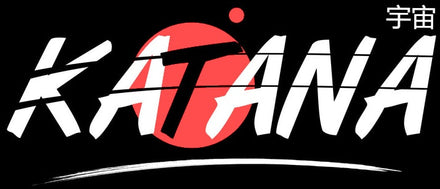Dive into the mysterious and fascinating world of katana blades, these sharp works of art that have left a mark in the history of Japanese samurai. In this article, we invite you to a profound immersion into the ancient art of blacksmiths and to explore the different types of katana blades, true jewels forged with precision and devotion. Whether you are a history enthusiast of Japanese warriors or simply curious to uncover the secrets of these legendary swords, get ready for a captivating adventure where each section reveals intriguing details and valuable knowledge.
Straight Blade (Chokuto)
The chokuto is one of the earliest types of katana blades and was used during the Kofun period (250 to 538 AD). Unlike other types of katana blades, the chokuto is characterized by a straight blade without curvature. However, despite lacking curvature, the chokuto offers great strength and cutting efficiency. It serves as the foundational katana that paved the way for the further development of katana blades.
Curved Blade (Tachi)

The Tachi is a type of katana blade characterized by its pronounced curve. It was used by mounted samurai during battles. The curve of the blade allowed samurai to draw their sword quickly while remaining on horseback. Moreover, the curve gives the tachi greater cutting power and maneuverability. The tachi is considered the direct ancestor of the modern katana.
Curved Sword (Katana)
The katana is perhaps the most famous and iconic type of katana blade. With its gentle curve and a length of approximately 60 to 73 cm, the katana embodies the sword of the samurai. The blade's curve allows for optimal force distribution during the cut, enhancing its cutting efficiency. The katana is also known for its sharp point, making it a formidable weapon in close combat.
Inverted Blade (Tsurugi)

The tsurugi is a type of katana blade distinguished by its inward-curving edge, unlike other types where the outer edge is curved outward. This type of blade was rarely used and was generally reserved for special or ceremonial occasions. The tsurugi is often associated with Japanese legends and myths, adding a mystical aura to this unique object.
Wave-Style Blade (Suguha)
The suguha blade is straight with a very subtle wavy line along its length. Unlike other types of katana blades, the suguha does not have a pronounced curve. This blade is appreciated for its elegant aesthetic and clean appearance. Although not curved, the suguha blade offers excellent strength and stability during strikes.
Conclusion on Katana Blades
Katana blades come in different types, each offering unique features that influence the sword's performance. From the straight chokuto to the curved katana, each blade type has its advantages and specific uses. By understanding the differences between these blade types, you will be able to choose the katana that best suits your needs and preferences.
However, it is important to note that the blade's quality also depends on the skill of the blacksmith and the quality of materials used. Japanese master blacksmiths have perfected their art over the centuries, creating katana blades that are both formidable weapons and exceptional works of art.
If you are a history enthusiast of samurai or a collector of Japanese weapons, studying the different types of katana blades is a fascinating journey. Each blade tells a story and embodies the mastery and refinement of the craftsman who created it.
Remember that maintaining katana blades is equally important as their initial selection. A well-maintained blade will last longer and retain its sharpness. So, take the time to learn the proper maintenance techniques to preserve the beauty and functionality of your katana.
Ultimately, no matter which katana blade you choose, it is a symbol of Japanese culture and tradition. Always respect these legendary weapons and use them with the honor and respect they deserve.















